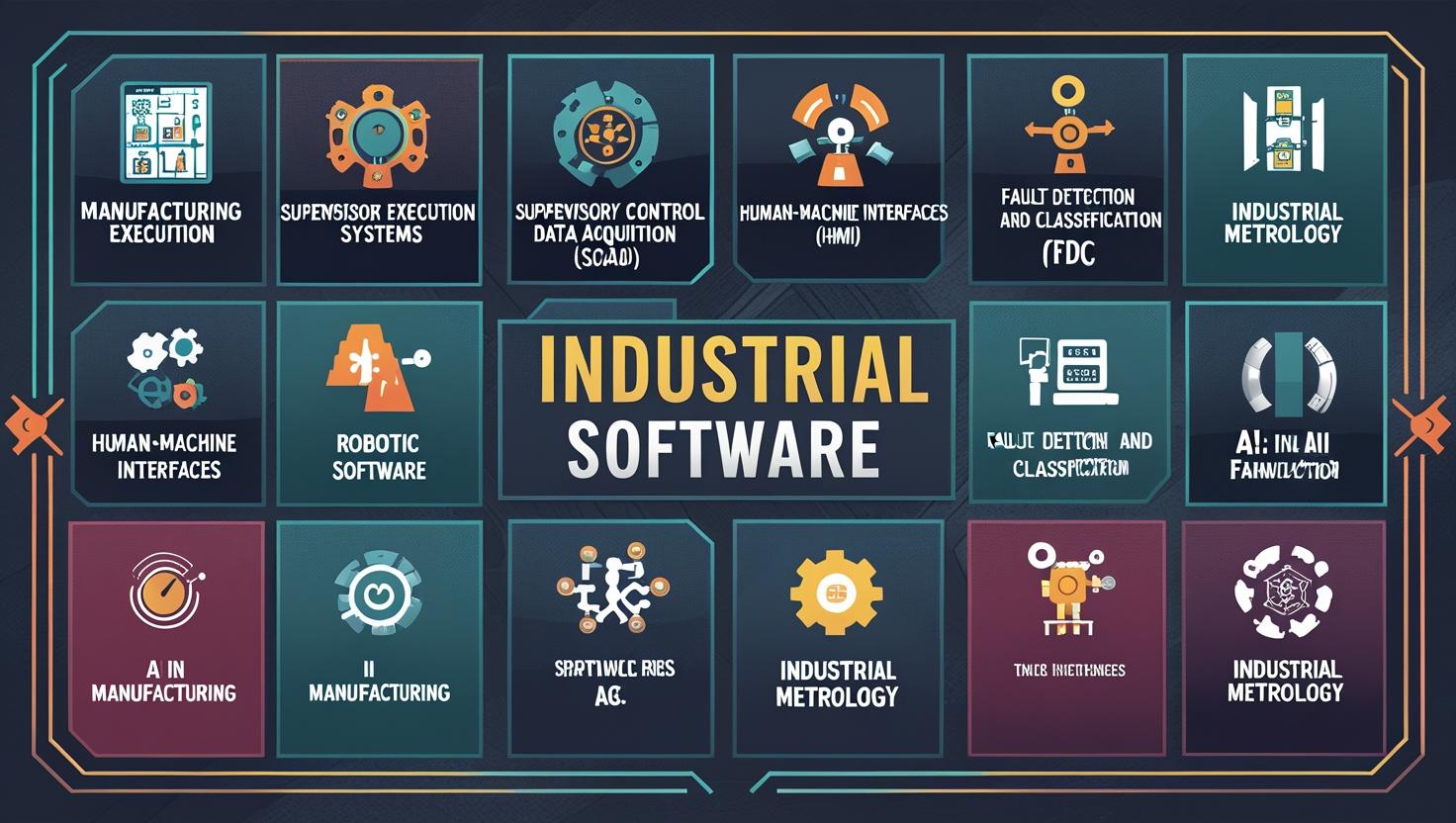The global industrial landscape is undergoing a profound digital transformation, with software playing an increasingly central role in shaping the future of manufacturing and production systems. At the forefront of this shift are advanced industrial software solutions such as Manufacturing Execution Systems (MES), Supervisory Control and Data Acquisition (SCADA), and Robotic Software. These technologies are driving efficiencies, enhancing process visibility, and enabling real-time decision-making across both process and discrete industries. The global industrial software industry is expected to be valued at USD 21.5 billion in 2024 and is projected to reach USD 46.6 billion by 2029; it is expected to grow at a CAGR of 16.7 % from 2024 to 2029
Manufacturing Execution Systems (MES) have become the backbone of modern manufacturing by bridging the gap between enterprise-level planning and real-time production activities. MES platforms provide granular visibility into every step of the manufacturing process, allowing companies to monitor operations in real time, manage production schedules more effectively, and improve product quality. The ability to trace materials, track performance, and ensure compliance has made MES indispensable in industries where precision, speed, and traceability are critical.
SCADA systems are equally vital, especially in sectors where remote monitoring and control of industrial assets are necessary. These systems allow operators to oversee operations from centralized locations, respond swiftly to anomalies, and ensure optimal performance of equipment spread across multiple sites. SCADA plays a crucial role in sectors such as oil and gas, water treatment, and energy, where downtime can result in significant operational losses. The evolution of SCADA systems, now often integrated with cloud and edge computing capabilities, has made them more intelligent, scalable, and secure.
Download PDF Brochure @
https://www.marketsandmarkets.com/pdfdownloadNew.asp?id=27555137

Robotic Software is another pillar of the industrial software ecosystem, enabling seamless control and programming of industrial robots that perform complex tasks on manufacturing floors. As robotics becomes more collaborative and intelligent, the software behind them has evolved to offer adaptive learning, machine vision, and predictive analytics. Robotic software enhances flexibility on the production line, allowing manufacturers to respond quickly to changes in product design or customer demand, while also improving safety and operational uptime.
The convergence of these technologies with artificial intelligence (AI), the industrial Internet of Things (IIoT), and cloud computing is reshaping industrial operations at a foundational level. AI-powered solutions are now used to detect faults before they occur, optimize production workflows, and generate actionable insights from large volumes of data. IIoT enables real-time connectivity between machines, sensors, and software systems, creating a fully integrated production environment. Cloud computing, in turn, allows for scalable data storage, advanced analytics, and remote access, further boosting efficiency and collaboration.
Industrial software is being adopted across both process and discrete industries, though their needs and applications differ. In process industries such as chemicals, pharmaceuticals, and energy, the focus is on continuous monitoring, compliance, and operational stability. Here, SCADA and AI-based fault detection tools are critical. In discrete industries like automotive, aerospace, and electronics, manufacturers are using MES for real-time production tracking and robotic software for automation of assembly lines, precision tasks, and quality inspections.
Geographically, North America and Europe remain strongholds for industrial software adoption due to their advanced manufacturing infrastructures and emphasis on digital transformation. Asia-Pacific, however, is emerging as a dynamic growth region, with countries like China, Japan, South Korea, and India investing heavily in automation, smart factories, and industrial modernization. Even in emerging markets, the adoption of industrial software is accelerating as businesses look to improve efficiency, remain competitive, and meet evolving regulatory standards.
Looking ahead, the industrial software market is expected to witness substantial growth. Key factors driving this momentum include the increasing complexity of manufacturing operations, the need for operational resilience in a post-pandemic world, and the ongoing shift toward more flexible and data-driven production models. As industries continue to embrace digitalization, the demand for integrated, intelligent, and scalable software solutions like MES, SCADA, and robotic software will only intensify.
In conclusion, industrial software is no longer a support function—it is a strategic enabler of innovation, agility, and competitive advantage. The continued evolution of these technologies will define the next chapter of industrial excellence, where efficiency, automation, and intelligence converge to create smarter, more sustainable operations around the world.
Frequently Asked Questions (FAQ)
1. What is the Industrial Software Market?
The industrial software market includes digital solutions used to manage, control, and automate industrial operations. This includes technologies like MES (Manufacturing Execution Systems), SCADA (Supervisory Control and Data Acquisition), robotic software, and others designed to improve productivity, efficiency, and data-driven decision-making in manufacturing and process industries.
2. Why is demand for MES, SCADA, and Robotic Software increasing?
Demand is rising due to the growing need for automation, real-time monitoring, and intelligent control of industrial systems. MES improves production visibility and scheduling, SCADA enables remote process control, and robotic software supports smart automation and adaptive manufacturing. These systems are essential for Industry 4.0 and smart factory initiatives.
3. How does MES benefit manufacturers?
MES provides real-time insights into production processes, helping manufacturers optimize workflows, ensure quality control, reduce downtime, and maintain compliance with industry standards. It acts as a critical link between the factory floor and enterprise resource planning (ERP) systems.
4. What industries are driving the growth of industrial software?
Both process industries (such as oil & gas, chemicals, energy, and water treatment) and discrete manufacturing sectors (including automotive, aerospace, electronics, and machinery) are adopting industrial software to improve efficiency, reduce errors, and stay competitive.
